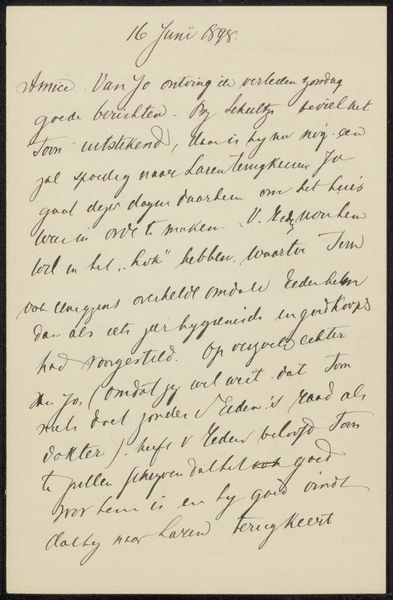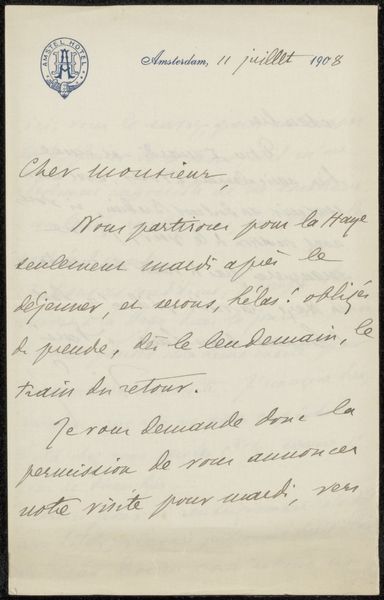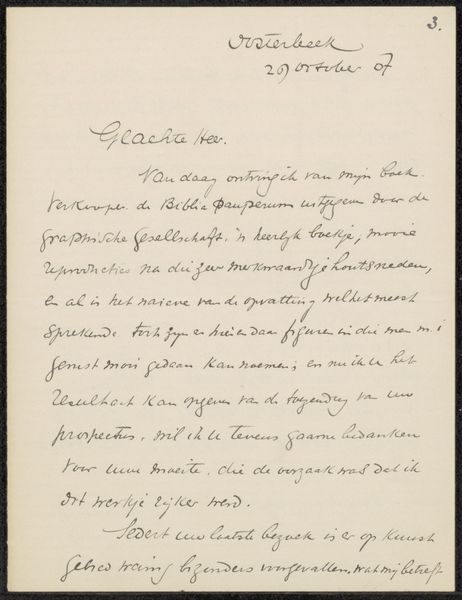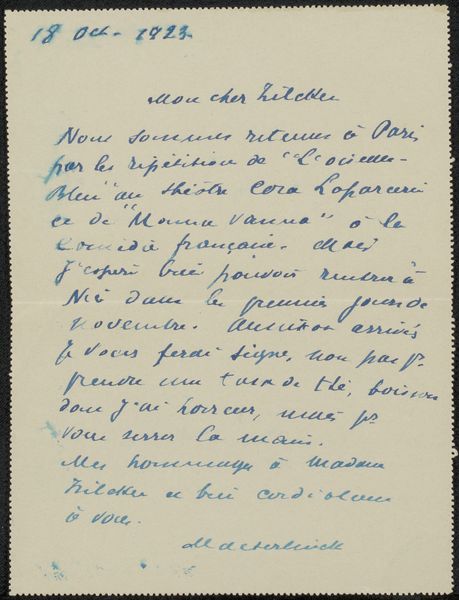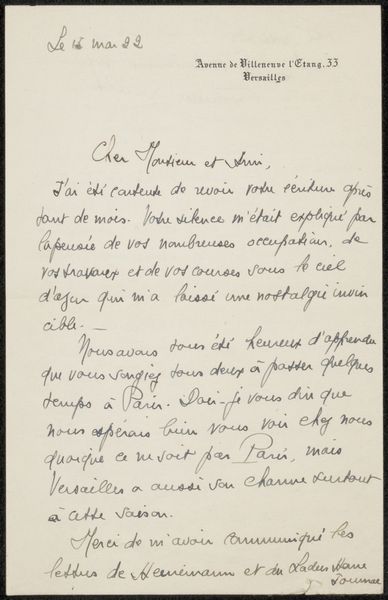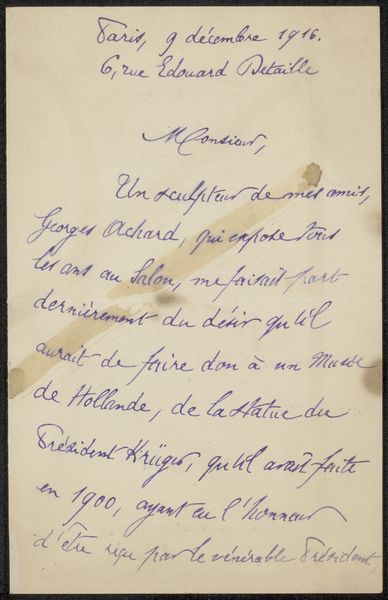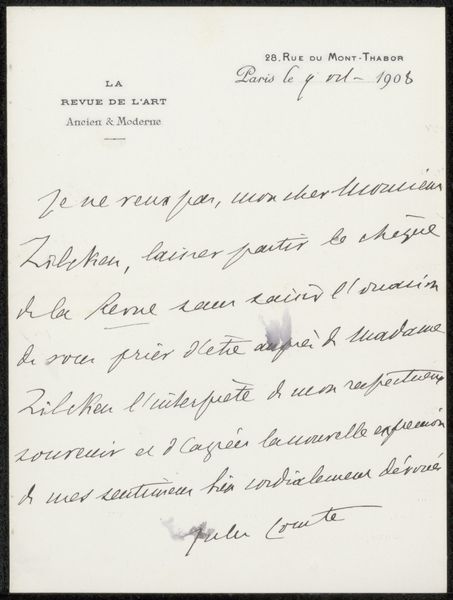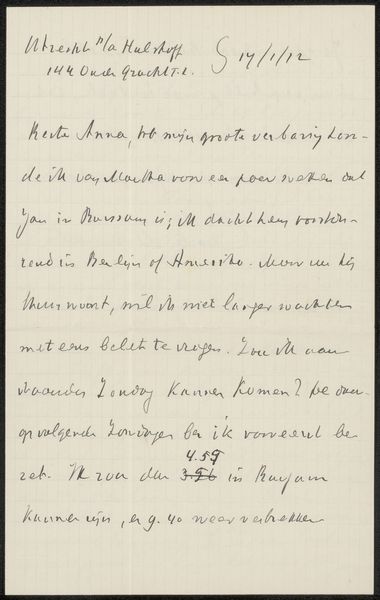
Copyright: Rijks Museum: Open Domain
Editor: Here we have "Brief aan Philip Zilcken," possibly from 1918, by Marguerite Stevens. It seems to be ink on paper, essentially a handwritten letter. The script itself is rather striking, almost like an art form in itself. What are your thoughts when you look at this piece? Curator: Immediately, my focus goes to the interplay of line and space. The dense script creates a fascinating texture against the relatively blank page. Observe the rhythm and variations in the pressure of the ink. Notice how the ascenders and descenders create a visual dance across the surface. Editor: I see what you mean. The slant of the handwriting gives it a sense of movement. It feels very personal. Curator: Indeed, and considering its function as a letter, we can view the materiality—the ink, the paper—as direct conduits of the artist’s intention. Ask yourself, what does the texture of the script itself convey, irrespective of the content of the words? Editor: That's interesting. I hadn’t considered the "handwriting" as a form of art-making. It adds a whole new layer to portraiture and how we reveal aspects of ourselves. Curator: Precisely. The formal qualities—the calligraphic strokes, the balance of the composition—communicate powerfully even before we decipher the text. It prompts consideration of writing as an expressive visual medium. Editor: I’ll definitely look at handwriting differently now, thinking about the choices the artist made in terms of pressure and form. Curator: I’m glad to hear that. It’s a fascinating exercise to see what qualities the work itself expresses, as an isolated aesthetic form, divorced from language.
Comments
No comments
Be the first to comment and join the conversation on the ultimate creative platform.



